The Shining
There is an apocryphal tale of Stanley Kubrick taking a box of books into his office and his secretary would hear a 'thump' on the wall every so often. When the noise stopped, she discovered that he had been picking up a book, reading it and when it didn't grab his attention, threw it against the wall. On this occasion, when he began reading Stephen King's The Shining, the book held his attention and Kubrick had found his next project. Not a fan of horror, he had turned down both The Exorcist and Exorcist II because he considered them banal, Kubrick saw something in the text that had promise and would make a good film.
The shoot, by common consensus, showed Kubrick at his perfectionist best - being extremely harsh to Shelley Duvall, demanding take after take and being ultra precise when it came to camera movements and position. Some of these tales have entered folklore, with Scatman Crothers forced to do the same scene 148 times before he broke down and told Kubrick he couldn't do any more and most scenes having 30 or 40 takes. With Kubrick afraid of flying, the shots in Oregon were supervised by someone else and most of the shoot took place in England, where a giant set was built recreating the lodge and the hedge maze.
The story diverts from King's novel the further through the film you go and he made the unwise decision to think he could do better with a TV film that is vastly inferior. The basic premise is the same with Jack Torrance, his wife Wendy and son Danny travelling to the Overlook Hotel where Jack will be the caretaker during the winter months when it is closed. During this time he gradually goes insane, linked to the hotel and a degree of cabin fever, and turns on his family in a murderous rampage. Much of the detail about Jack's past, the hotels murky history and Jack's relationship with Wendy has been left out but there is a suggestion that it is a family that hates itself and the horror comes from the patriarch, the protector, turning on those he should love and protect. The screenplay by Kubrick and Diane Johnson is, in my opinion, an improvement on King's story which is a little too long, is saggy in places and benefits from having so much cut out and the inclusion of a psychoanalytic subtext with plenty of Freudian imagery.
Help comes in the form of Danny, who has a psychic gift which, as he learns from Halloran, the Overlook's head chef, is shared by other people, including him, and was termed by Halloran's grandmother as 'shining'. Danny is able to communicate with Halloran, enjoying a heat wave in Florida, whilst he and his family are snowed in in Colorado and the hotel begins to take hold. Before even arriving, Danny has flashes of an elevator emptying blood and the twin girls killed by a previous caretaker, but his link to the hotel deepens once he arrives with a sinister feeling about Room 237.
After turning down suggestions for the lead from Stephen King and briefly considering Robert De Niro and Robin Williams, he settled on character actor Jack Nicholson, who was mostly known for Five Easy Pieces, Chinatown and One Flew Over the Cuckoo's Nest, for the lead. Shelley Duvall isn't the gorgeous blonde from the novel, but has a vulnerability that suits the Wendy character perfectly, making the terrifying ending all the more effective. As the psychic son, Danny Lloyd, a first time actor, was cast and worked well with Nicholson, Duvall and Kubrick. The final piece of the puzzle was casting Halloran and Nicholson recommended Scatman Crothers, who he had worked with on Cuckoo's Nest and, looking back, I can't imagine a better cast.
First released in a long (144 minute) cut to lukewarm reception, Kubrick recut the film to a much leaner 119 minutes, removing entire scenes (including a different ending) and exchanges yet the film, almost unbelievably given it's classic status now, was not well received by critics or paying audiences. I only saw the shorter version a couple of times on television over a decade ago before buying the R1 DVD, which has the longer version and has been a staple of my viewing ever since. This Blu-ray contains the shorter of the two which was endorsed by Kubrick and was his preferred version. I believe Kubrick was right and that the trimmed down version is a much leaner and tighter film which moves along at a better pace, improving the overall experience.
The Shining is now recognised as a genre classic with a career-defining performance by Jack Nicholson. Most of the images, lines and shots are part of popular culture with 'Here's Johnny!' now associated with The Shining rather than The Johnny Carson Show and the phrase 'All work and no play makes Jack a dull boy' now in common usage. It truly is a great horror film and one of Kubrick's best.
The Disc
Extra Features
Kubrick was never one for supplementary material, never endorsing making of documentaries or providing commentaries so this disc has what was previously available, though only on the Special Edition DVDs.
The audio commentary by Garrett Brown, who is credited with inventing the Steadicam and was the chief camera operator on the film and John Baxter, a film historian who wrote a biography on Stanley Kubrick is a slightly dry affair, with a fair amount of dead air but there is some interesting and worthwhile information divulged by the two. It seems that they were recorded separately though I wouldn't be surprised if they were in the same room and just took it in turns to speak. The same commentary is on the longer version of the film so I can only presume that it had even more dead air and has just cropped to fit.
Kubrick's daughter Vivian, who was 19 at the time, went around the set with a camera in a pram and, because of her age and sense of naïveté, was granted unprecedented access to the actors, even showing Nicholson tucking his shirt into his trousers and removing a radio mike from inside them! This is a great look behind the scenes and shows her father interacting with the actors and how he directed Danny Lloyd. Her commentary is pretty good, as she describes how she got such access, which camera she used and her thoughts on the shoot.
View From The Overlook: Creating The Shining is a half hour piece which is interesting and revealing, comprising interviews with members of the cast and crew, plus contemporary filmmakers. It concentrates on how the film was made, with the huge set and how Kubrick handled the actors, finishing as a 'memories of Stanley' and that it's a shame that he's no longer alive and making films.
Wendy Carlos, Composer is a seventeen minute featurette with the composer who comes across as a slightly weird cat lady, having photographs of her moggies on one monitor and two sleeping on top of another as she is being interviewed. She talks about the music that wasn't used and that that was for both The Shining and A Clockwork Orange.
The Visions of Stanley Kubrick is a tribute of sorts to Kubrick as a visionary director and the impact of his early career as a still photographer on his career as a filmmaker and qualities as a cinematographer. There are contributions from those who worked with him as well as those who just appreciate and love his films, particularly cinematographers.
There is also the theatrical trailer
The Picture
There is some dispute as to the original aspect ratio, with some claiming it to be 1.66:1 and others 1.85:1, but this disc has 1.78:1 which would fit with the 1.66:1 ratio but nothing looks either stretched or squashed and it is a welcome alternative to the DVD ratio of the cropped 1.33:1 (the ratio of which Kubrick was a fan).
The picture is stunning with deep blacks and vibrant colours - Kubrick apparently got around including the blood from the elevator in the trailer by claiming it was rusty water and this seemed plausible from the SD picture but a frankly laughable suggestion looking at this marvellous HD transfer.
The Steadicam is a fantastic invention and the numerous long shots look like they were filmed using dolly tracks but obviously weren't given the duration and location of them. The hotel is fantastically designed and has some signature Kubrickian touches, in particular the red and white bathroom which has ominous overtones but does hark back to A Clockwork Orange in the modernistic design. Kubrick employed title cards as part of the timeline which, at first viewing, don't seem to make any sense at all (they range from Closing Day to Saturday and 8am) but, on repeated viewings, ramp up the pace with events turning to months, then days, then times.
The Sound
Surprisingly there isn't the original mono track, but a selection of Dolby Digital 5.1 tracks in various languages plus an uncompressed LPCM 5.1 English option. This is the soundtrack of choice with superb sound from every channel, crisp dialogue and escalating terror due to the dissonant soundtrack by Wendy Carlos and Rachel Elkind. They even elicit jumps from title cards, especially the one reading Tuesday, which is accompanied by a loud jarring sound.
Though the film was never intended to have a surround mix, it really adds to the horror and is a much better option than the mono track on the DVD, so its omission isn't really a problem.
Final Thoughts
The Shining is a great film with inspired direction, beautiful camerawork, superb editing and great performances by the entire cast, particularly Jack Nicholson.
If you only have one of the standard (no extras) DVDs then buying this is almost a no-brainer and, even if you have a special edition, the massive improvement in the sound and picture quality should make this worth serious consideration. It is a very good Blu-ray of a horror classic and is worthy of a place in any film fan's collection.
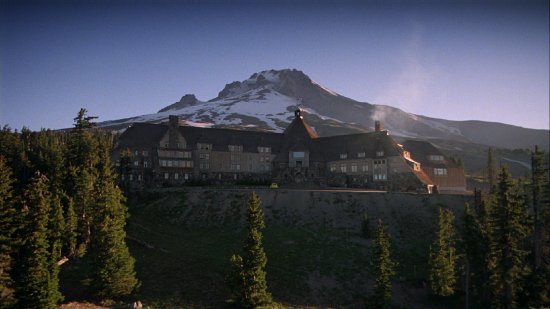
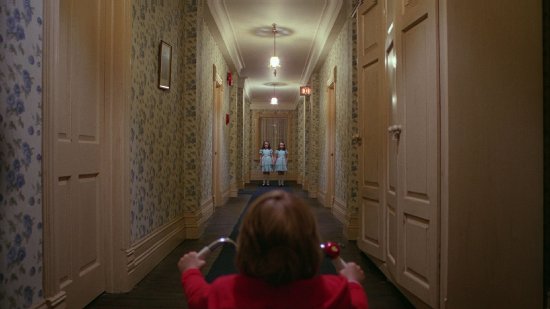
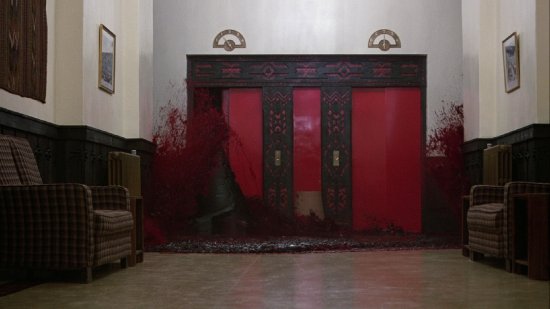

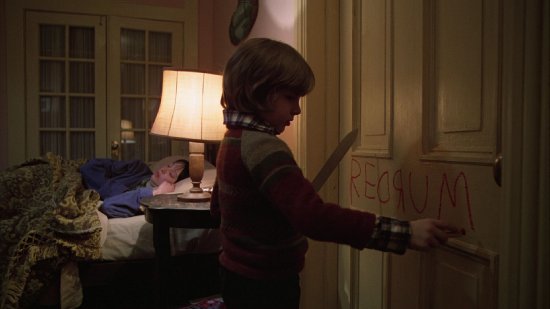
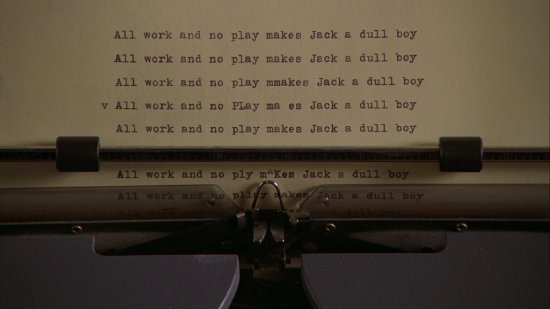
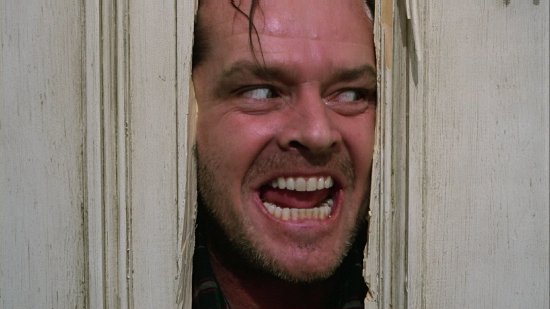
Your Opinions and Comments